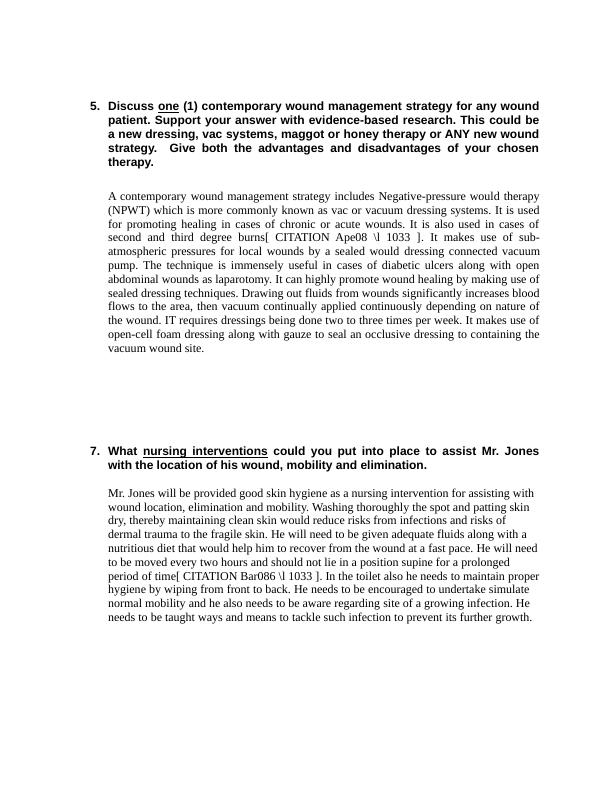Ask a question from expert
A Contemporary Wund Management Strategy
2 Pages487 Words207 Views
Added on 2020-04-21
About This Document
This could be a new dressing, vac systems, maggot or honey therapy or new wound strategy. A contemporary wound management strategy includes Negative-pressure would therapy (NPWT) which is more commonly known as vac or vacuum dressing systems. It makes use of open-cell foam dressing along with gauze to seal an occlusive dressing to containing the vacuum wound site. Jones will be provided good skin hygiene as a nursing intervention for assisting with wound location, elimination and mobility.
A Contemporary Wund Management Strategy
Added on 2020-04-21
BookmarkShareRelated Documents
End of preview
Want to access all the pages? Upload your documents or become a member.
The Surgical Procedure for the Resecation
|8
|1557
|101
Assignment on Clinical Care Plan
|12
|1769
|26
WOUND MANAGEMENT.
|4
|435
|52
Wound Care Management: Best Practices for Nurses
|27
|6555
|458
Wound Case Scenarios - Desklib
|10
|1805
|114
Nursing Diagnosis for Mr Jones
|11
|3776
|297
